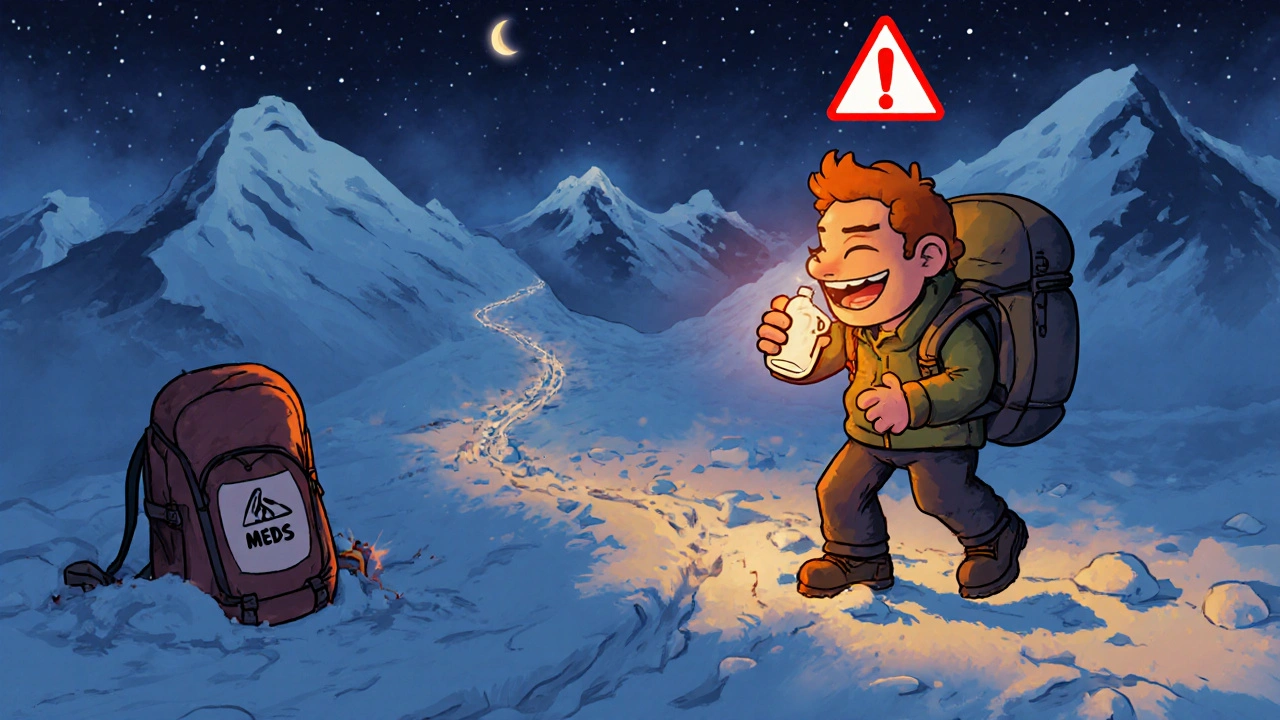High-Altitude Medications: What Works and What to Avoid
When you climb above 8,000 feet, your body struggles to get enough oxygen—and that’s where high-altitude medications, drugs designed to help your body adjust to lower oxygen levels at high elevations. Also known as altitude sickness preventives, these medications don’t cure the problem, but they give your body a better shot at adapting without crashing. For many people, a simple trip to the mountains can trigger headaches, nausea, dizziness, or even life-threatening swelling in the lungs or brain. But with the right preparation, most of those risks can be avoided.
The most common and well-studied high-altitude medications, specifically acetazolamide, sold under the brand name Diamox. Also known as carbonic anhydrase inhibitors, these drugs help your body get rid of excess carbon dioxide faster, which tricks your brain into breathing more deeply and taking in more oxygen. It’s not a magic pill—you still need to climb slowly—but studies show it cuts the chance of altitude sickness by up to 75% if taken before you ascend. Another option, though less common, is dexamethasone, a steroid used for severe cases or when acetazolamide isn’t an option. But here’s the catch: these aren’t for everyone. If you’re allergic to sulfa drugs, acetazolamide could cause a serious reaction. And if you’re just going for a weekend ski trip, you probably don’t need it at all.
What you won’t find in most pharmacies are miracle supplements like ginkgo biloba or coca leaves—some people swear by them, but science doesn’t back them up. The real solution isn’t luck or herbal teas. It’s planning. Know your route. Know your pace. Know your body. And if you’re heading above 10,000 feet, especially if you’ve had altitude sickness before, talk to your doctor about whether acetazolamide, a proven, FDA-approved preventive for altitude sickness. Also known as Diamox, it’s the gold standard for safe, effective high-altitude travel. The posts below cover everything from how Diamox works to what happens when you skip it, how it interacts with other meds, and real stories from people who’ve climbed peaks, trekked the Himalayas, or just tried to hike in Colorado without getting sick. You’ll find no fluff—just clear, practical info you can use before your next high-altitude trip.
Prepare for altitude sickness and medication challenges on pilgrimages and treks with proven strategies, essential drugs like Diamox and dexamethasone, proper storage tips, and real-world advice from medical experts.

